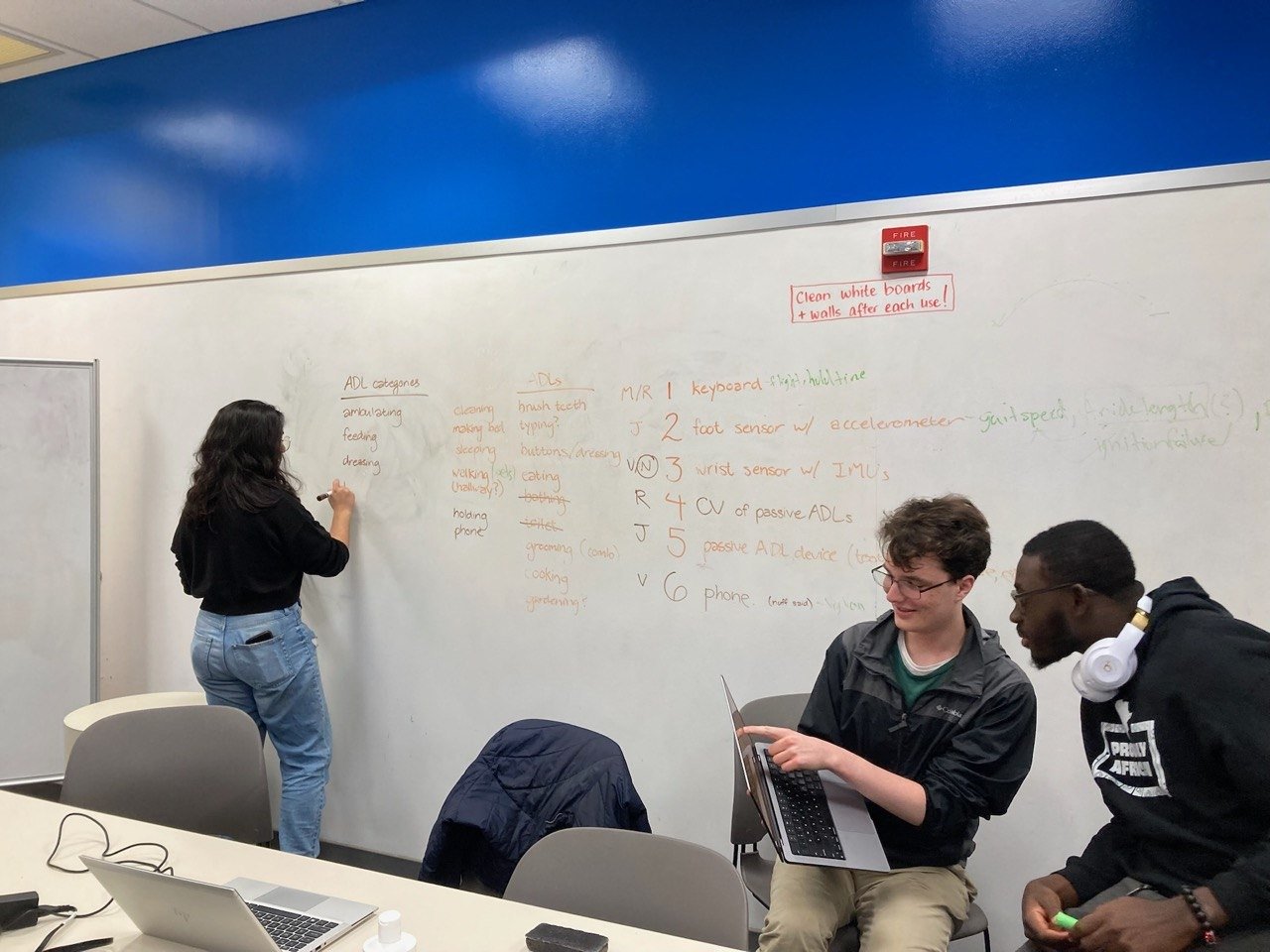A student team in the Department of Biomedical Engineering has developed a signal processing algorithm that they hope will someday help clinicians understand how well medication is working for patients with Parkinson’s, a neurodegenerative disease that affects an estimated nine million patients worldwide. The Parkinetics Design Team will present its approach on May 1 at the Whiting School of Engineering’s Design Day.
The Parkinetics Design Team initially aimed to develop a way to distinguish Parkinson’s disease from other similarly presenting movement disorders, but after interviews with stakeholders, they pivoted to address the need for better data on how patients respond to medications like Levodopa so dosages can be adjusted effectively.


